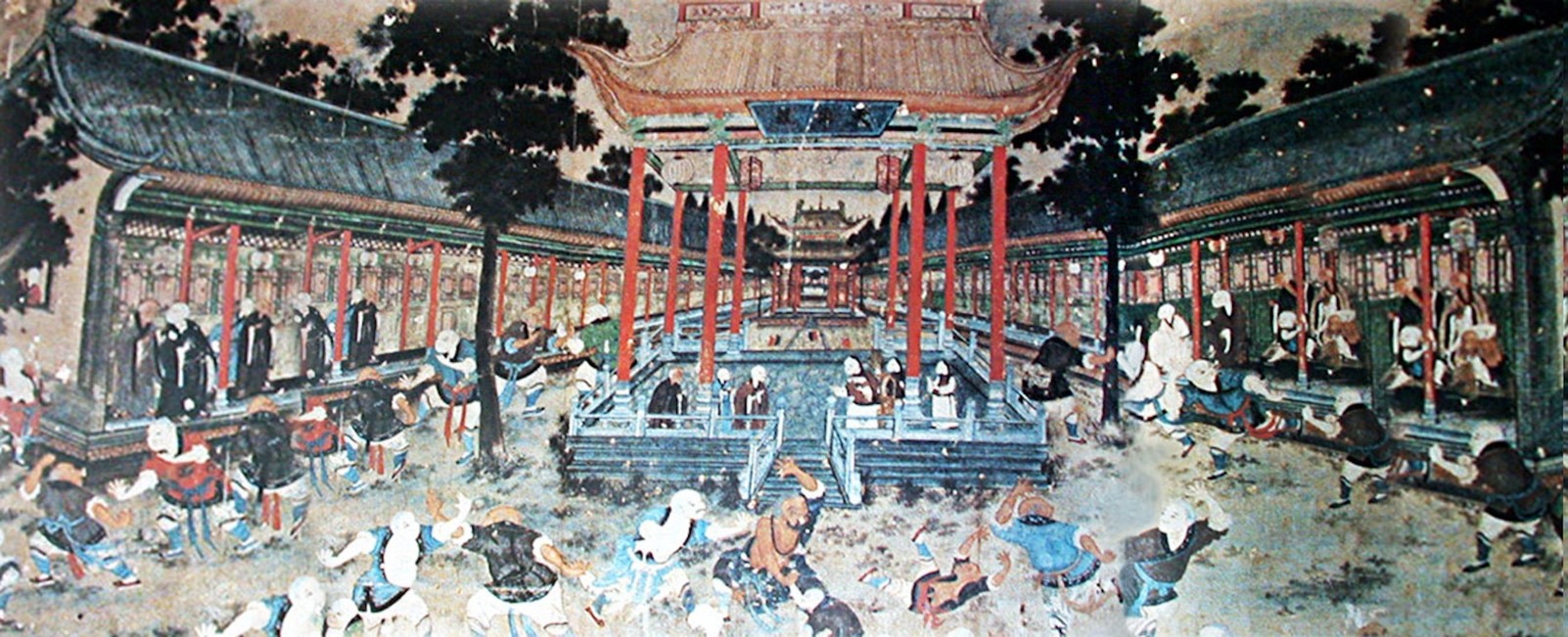
Kadihai Martial Academy has been founded to research and teach the traditional Martial Arts, in the footsteps of Bodhidharma, with the aim to reach Enlightenment. We train in and teach:
"So, in a field of tactics applied to a crowd, you will win in order to retain the good men, you will win in order to make use of many men, you will win in order that your conduct is always good, you will win in order to govern the country, you will win in order to feed the people and you will win with a view to maintaining order in the world. Thus, in all fields, you will know how to avoid being beaten by others. And finally, you will help yourself and your honour: that is the Way of Tactics"
Experience in the Martial Arts of three regions drives us to seek a holistic understanding of Martial Arts for mankind as a whole, beyond local language and custom.
The Kadihai School existed from around 4th century BC to the 10 century AD, south of present day Kanchipuram in Tamil Nadu. Students were taught various sciences including Martial Arts, Economics, Government, Philosophy and Religious systems. Bodhidharma, the legendary Monk who founded the Shaolin Temple, was a student of the Kadihai School.
Adi Murai is the ancient Indian Martial Art, acknowledged as the mother of all Martial Arts, practiced in South India for thousands of years. We initiate students into Adi Murai starting with the Stick, the fundamental weapon of Man, which introduces the student to an awareness of timing and distance in combat.
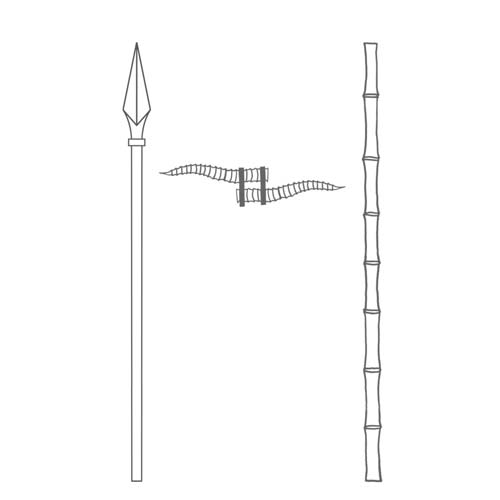
The stick fighting art, a branch of Adi Murai, is known as Silambam. With this foundation, the student is next taught unarmed combat and other weapons, based on his ability and inclination.
After a minimum of twelve years of training, the most advanced art of Marma-Adi may be taught to students who can handle the responsibility of the powerful and dangerous techniques of this ancient and arcane art. This art is taught in strict accordance with the traditions laid down in the Shastras by countless generations of masters who have codified the Shastras and taught it.
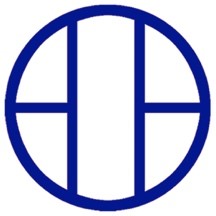 SHITO-RYU KARATE-DO
SHITO-RYU KARATE-DOShito-ryu Karate-do has its roots in the White Crane kung-fu which reached Okinawa and evolved over time into Karate. To unify Karate, Masters Itosu & Higaonna taught an exceptional student, Kenwa Mabuni, their respective styles of Shorin & Goju ryu katas. Master Kenwa Mabuni is the acknowledged founder of Shito-ryu Karate. His son & successor, Soke Kenei Mabuni, after decades of teaching, awarded Dai-Sensei Moses Thilak, the Founder & Chief of the Alan Thilak Karate School, an 8th Dan Black Belt and the title “Soshihan” of Shito-ryu Karate.
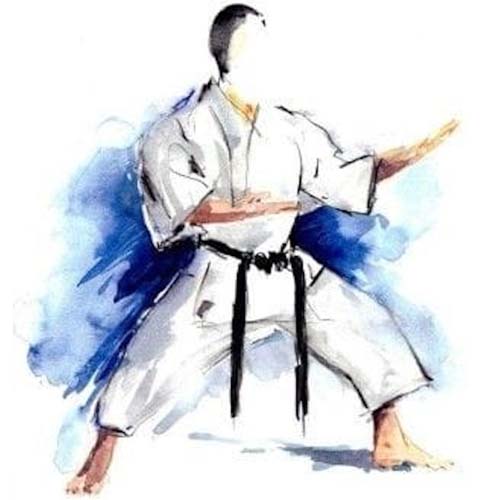
The singular advantage of Shito-ryu Karate-do is the combination of techniques and concepts from both the Shuri-te and Naha-te styles of Karate, founded by Sensei Kenwa Mabuni who was taught by the legendary Masters, Itosu and Higaonna. We teach the original, traditional style Shito-ryu from Soke Kenei Mabuni.
Katas from both styles are practiced resulting in external and internal training. The style continues to evolve while its speed and efficiency, while retaining effectiveness, have led to success in both sport and traditional Karate arenas.
In keeping with the Kadihai philosophy of physical training in the first stage, Shito-ryu Karate-do has been tested and accepted as an ideal external martial art system.
We teach Shito-ryu Karate in its traditional form, with emphasis on Kata training and bunkai. Kata is the storehouse of all karate knowledge. Practice of Kata is practice of the basics, stances, movement, shifting of body, focus and developing the mind, body and spirit.
Following the traditional system of grading, 7 kyus are awarded with a colour belt starting with Yellow, Orange, Blue, Green, Purple, Junior Brown and Senior Brown; after which the Sho-Dan or Black Belt is awarded. At each stage, the appropriate syllabus is taught including Punches, Strikes, Blocks, Kicks, Combinations and Kata. We insist on gradual and steady progress and do not teach “intensive / crash course” programs which are the popular fashion today. Karate is a Martial art with its philosophy based on the warriors code and we teach it this way.
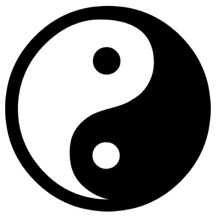 TAI CHI CHUAN
TAI CHI CHUANTai Chi Chuan is a Chinese Martial Art which is effective and works directly with internal energy to regulate and increase it. We teach the Yang Style Tai Chi, learnt from Sifu Daryl Johnson, a disciple of Grandmaster Fu Sheng Yuan.
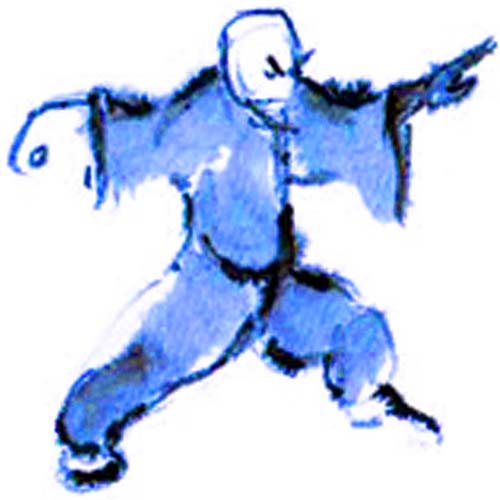
It may be noted that Tai Chi Chuan has spread worldwide primarily as an exercise to maintain health and specifically in recovery after injury. While we teach Tai Chi as a martial art in its purest traditional form, students are welcome to practice purely for energy and health reasons.
In keeping with the Kadihai philosophy of physical training in the first stage, Tai Chi Chuan has been tested and accepted as an ideal internal martial art system.
We teach Tai Chi Chuan as a martial art explaining the techniques of offense and defence. Simultaneous to teaching the form, its martial applications are demonstrated and explained. Students are invited to test the applications and find their effectiveness themselves.
The legendary Master, Bodhdharma, has been placed in the genealogy of the early Pallava dynasty of Kanchipuram, South India as the successor to King Nandhi-Varman (490-520 AD). He was the third son of King Skandavaram and a Kshatriya by caste. He was a disciple of Prajnatara, the twenty-seventh Patriarch of Buddhism in India, who after 40 years of religious training, changed his disciple’s name from Bodhitara to Bodhidharma and nominated him as the twenty-eighth Patriarch.
He sailed to China for the first time following his Master’s instructions to preach Dhyana or Zen Buddhism. In the Shaolin Temple, he found that unlike him, the monks there were unable to meditate for hours together. He then taught them physical exercises or techniques to condition the body and minds of the monks, referred to as ‘Shi Pa Lo Han Sho’, known as the Eighteen hands of the Lo-Han in the Shaolin Monastery. The Shi Pa Lo Han Sho is known as Vajramushti in Sanskrit and Adavu Pathinettu in Tamil.
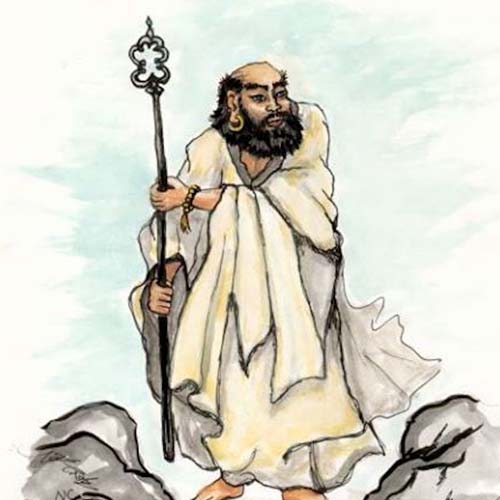
As a Pallava prince, Bodhidharma, was trained in the eighteen bare hand fighting techniques using Varma strikes from the traditional war techniques of India known as Vajramushti. It is certain that he taught these techniques to disciples as a method of conditioning body and mind to reach enlightenment through Dhyana or Zen and not merely as a brutal striking and kicking fighting art.
He returned to India compelled to take part in the war of succession for the throne against his brother. Defeated by superior forces, he then left India and sailing in a single boat reached China. He continued to teach Dhyana and Martial Arts to his students. Mystery envelopes the end of Bodhidharma’s life in China. Some sources say he returned to India across the desert while others claim he went to Japan. All sources however agree that he lived to a ripe old age and according to Tao-Hsuan, was over one hundred fifty years old when he died.
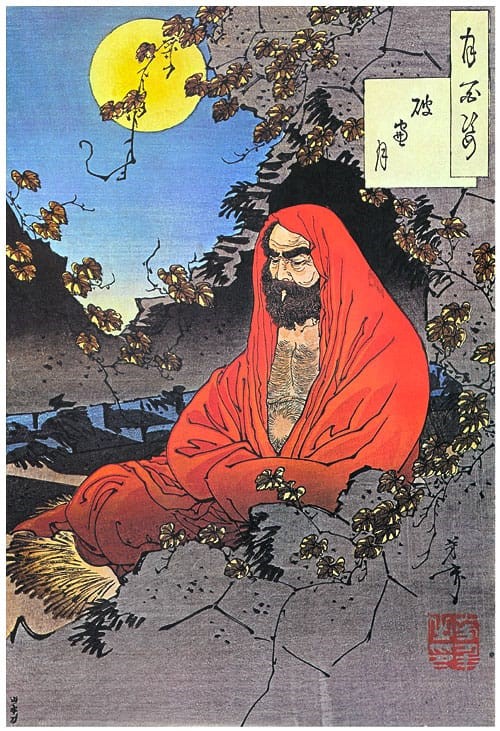
Decades after his death, a Chuan Fa (traditional fighting art) Master named Cheng Yuan Shang Jen, verified Bodhidharma’s Eighteen Hands of the Lo Han, combined them with forms of his own style and increased them to seventy two forms. Subsequently, in Shensi province, with another Master, Li, these forms were increased to one hundred and seventy and the best forms were named after dragon, tiger, snake, and crane.
Bodhidharma’s contribution to Varma is twofold. One approach is through Dhyana or yogic approach and the second through Martial Arts. In the first method, he created a form of Zen Buddhism which strengthened psychic energy and in the second method, body and mind training through the Martial Arts based on the Indian Varma system.
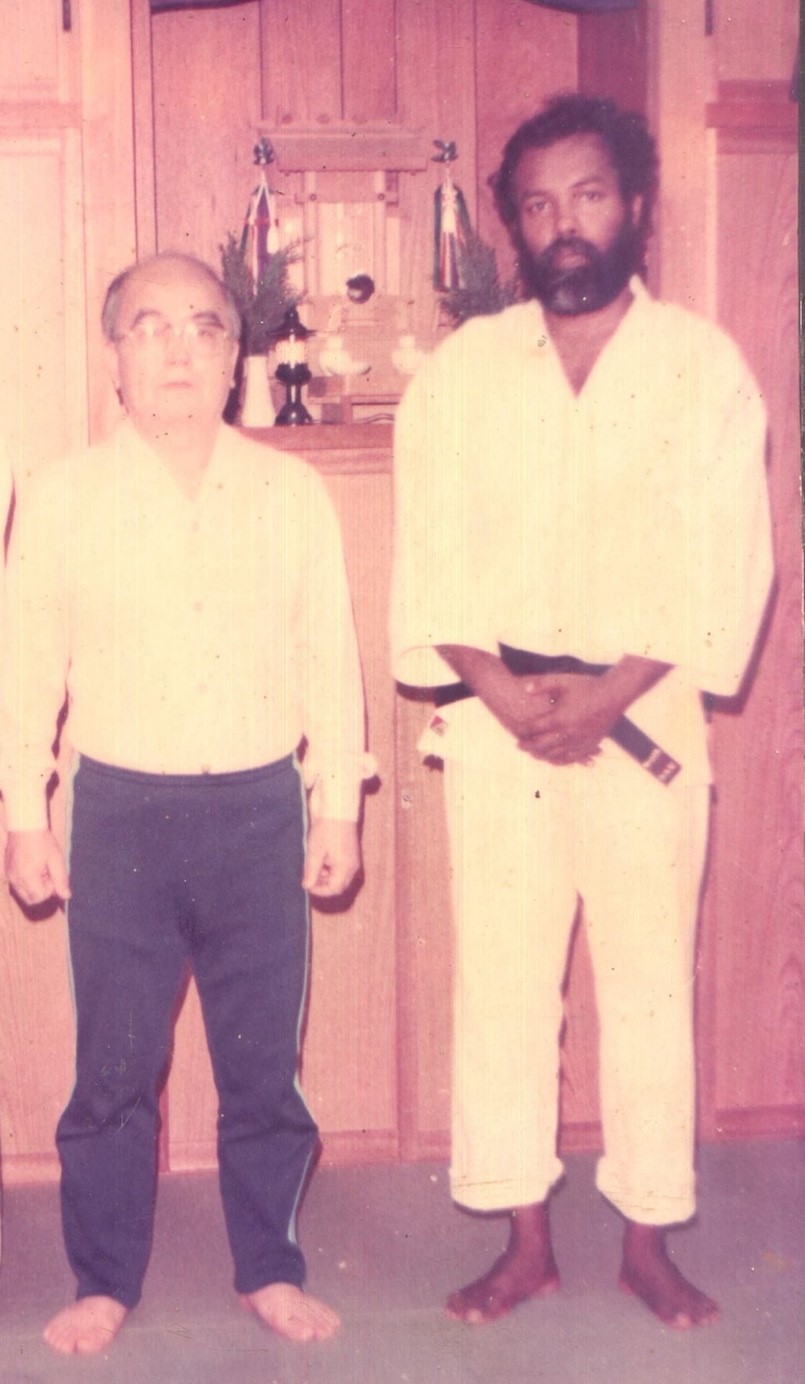
Dai-Sensei Moses Thilak is the pioneer of Karate-do In India. From a well-known warrior family in Nagercoil, who served the Maharajas of Travancore for centuries, he took to martial arts at a young age. Starting with Judo, he progressed to Karate under Sensei Alan Dwyer, a direct student of Soke Kenei Mabuni, head of Shitoryu Karate-do. With total commitment to training, he rapidly earned senior grades, culminating with the Hachi-Dan or Eighth Dan Black Belt and the title “Soshihan” of Shito-ryu Karate.
Simultaneously, he trained in the Indian Martial Arts of Kalari, Silambam, Kuthu-varisai, Adi-Murai and the most advanced art of Marma-Adi. His interest led him to start studying the Marma Shastras and he began collecting them. His intention was to document the various systems of Indian martial arts in order to preserve them. He spent years meeting various Masters, filming and recording their systems. He trained under the finest Indian martial arts masters, including Vasudevan Gurukal, Natesan Asan, Madhavan Asan, Balakrishnan Gurukul, Panikkar Asan and many others. Silambam was a passion and he trained under
Ramiah Doss Asan, Jalabudin Asan, Ali Asan and others. He published a book on Introduction to Marma-adi and Kalaripayatu in the early Eighties. He made it a point to encourage his Karate students to train in the Indian Martial arts, stating that it would help them understand Karate better. He was featured in the BBC documentary, “Way of the Warrior” as a leading exponent of Kalripayattu and Marma-adi.
An associate, Pandian had introduced him to the Chinese arts in the late seventies and this was stimulated by Sifu Luca Ghinolfi of Italy when he visited India twice. When Sifu Daryl Johnson visited India, he started earnest study of Yang style Tai Chi Chuan.
Focussing on the Chinese martial arts, he came full circle and finally developed the insight that all martial arts are one. He was working on a book contrasting the Indian, Chinese and Japanese martial systems which unfortunately, never got published.
In 1976, he formed the All-India Karate-do Federation, with Renshi RVT Mani in Madras. Over the years, he built it up, district by district, State by State till Karate had spread all over the country. National Championships were conducted regularly, Indian teams were sent to World Championships and Govt. of India recognition was obtained in addition to membership of WUKO [later World Karate Federation]. Out of the 20 State federations, his students ran and managed 16 of them. On discovering that the accounts of the AIKF were not handed over to the Treasurer, Dai-Sensei Moses objected strongly and suspended the errant officials. Subsequently, the Federation split into two factions leading to endless litigation in Courts across the country. He then built the AIKF Madras faction into a formidable force with over 20 State Association members. This ability illustrated in detail, the sheer ability and magnetism of the man in organising Karate at the grass roots level. While conducting a National Championship in Coimbatore in January 2004, he passed away suddenly of a stroke. Masters and students from all over India attended his funeral in Madras.
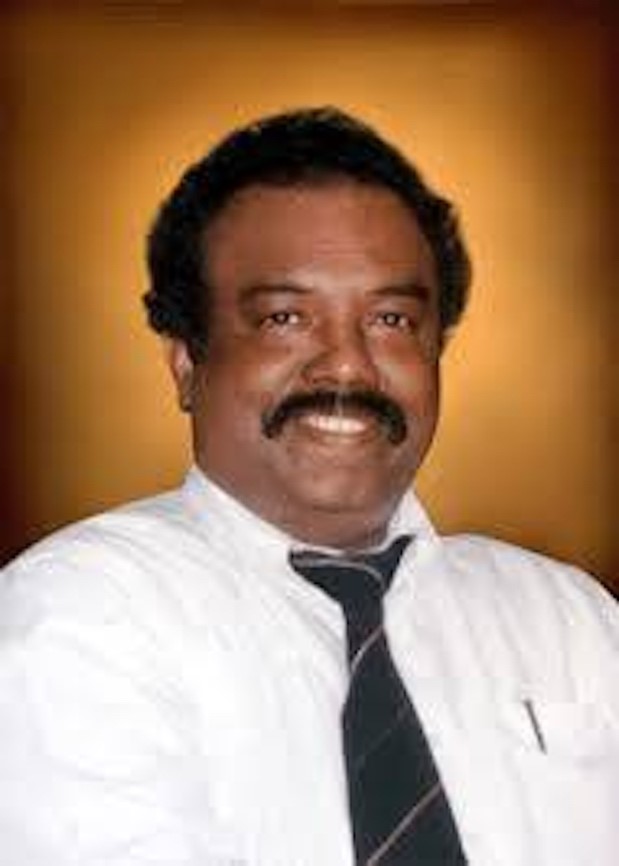
Two years after his passing, the AIKF fragmented into a number of bodies claiming they are the rightful ones, while all are embroiled in litigation in Courts all over the country. Dai-Sensei Moses Thilaks’ life’s work as the founder who introduced and spread Karate to every State in India remains unchallenged and unmatched to-date.
The Kadihai Martial Academy has revived this ancient tradition and all teachings are based on the principles followed by this ancient and glorious school.
The original philosophy of the native land of South India which existed for thousands of years was taught. The syllabus included training the physical body in the martial arts which included techniques of defence and offence combined with intense physical conditioning, which was of immense use in the battle-field. Next, the mental body was trained with all the subtleties and nuances necessary to handle and eventually master the mind in all possible situations that warriors had to face. Finally, the spiritual body was trained with detailed instructions in the Shastras which encompassed the knowledge, and above all, the wisdom necessary for warriors to administer and rule kingdoms.
The entire teaching was based on the principles of Dharma, as detailed by the ancient sages of South India. The major ruling clans sent their sons to study at the Kadihai school and preference was given in succession to those who graduated with honours.
Sensei Jaideep Bhale Rao is the seventeenth generation descendant of the Rajas of Pedapavani, belonging to the royal warrior clan known as Padmanayaka Velama Doras of Andhra Pradesh. They have a recorded history of a thousand years, ruling independent kingdoms while supporting the Kakatiya dynasty and the Vijaynagar Empire. The clan were victors in the famous Palnadu war. In the Bobbilli war, the Velamas chose death over defeat, in the tradition of their Dravidian ancestors, and died to the last man, woman and child.
For twenty four years, Sensei Jaideep Bhale Rao walked in the shadow of his master, Dai-Sensei Moses Thilak, till he passed away in 2004. Among his closest students, he spent hours discussing the Indian, Chinese and Japanese martial arts and developed an understanding of the genius of Dai-Sensei Moses Thilak. He considers himself extremely fortunate to have “lived the martial arts” with such a great master and intends to continue his legacy to the extent possible. He was selected by Dai-Sensei Moses Thilak to study different Martial Arts, starting with Kendo & Iaido with Sensei Koichiro Somiya, 5th dan, for three years. Next, he learnt Silambam with Syed Ali Asan. Along with his karate training, he constantly trained him in Marma-Adi and in the concepts he developed over the years.
In Singapore, Dai-Sensei Moses Thilak asked him to study Silat under Master Ramzi Alwi and Tai Chi Chuan under Master Yeo. On his return to India, Dai-Sensei Moses Thilak made him train in Yang style Tai Chi Chuan under Sifu Daryl Johnson. When Sensei Jaideep Bhale Rao settled down in Mysore, Kobudo camps were conducted by Sensei Hiroshi Akamine and Kenjustu camps by Sensei Hunter Armstrong in Mysore.
Sensei Jaideep Bhale Rao was the official representative of India at the World Karate Federation Championships at Kota Kinabalu, Sabah, Malaysia in 1994. Sensei Jaideep Bhale Rao has been President of the Andhra Pradesh & Karnataka State associations at different times and was elected Treasurer of the All India Karate-Do Federation (AIKF) in 2000 at Bhopal. When the finances were not handed over to him, he objected by filing a case with the authorities, which led to the split of the Federation. Subsequently, he was elected President of the AIKF Chennai, in Pune. The cases filed are still pending in the Courts. When the AIKF split again, he walked away from all political activity and today is involved solely in learning, training and teaching the Martial arts. His goal is to continue the legacy of his master and continue in the purest traditions of the Martial Arts. Currently, he is involved whole time in the study of Shastras and reviving the Kadihai system
Dr. M. Manikavasagam is a direct student of Dai-Sensei Moses Thilak from whom he received his Black belt in Karate. Pursuant to this, he chose the Ancient Art of Varman as a field of research and his thesis was accepted by the University of Madras, which awarded him the degree of Doctor of Arts.
He is regarded as the foremost authority on Marma-Adi and the Marma Shastras. Dr. Manikavasagam has studied and trained with over a hundred Indian Martial Arts Masters in Silambam and Varmam for over four decades and has developed an in-depth understanding of the Indian martial arts. He is in the process of collecting and classifying the Marma shastras and is working with a group of Asans/asters in the preservation of this ancient knowledge.